35 Lies You Learned in School

As a kid, you probably didn’t question what you learned in school. After all, why would your teachers lie? Well, it turns out that you should’ve raised your hand more.
From myths surrounding vitamin C and chewing gum to the bull behind bulls loathing the color red, we’ll dispel those common lessons you never thought to question.
Lie: Chameleons Change Colors for Camouflage
In popular culture, chameleons are synonymous with stealth. But the reptile’s most well-known trait—changing color at will—isn’t about blending in with its surroundings. Contrary to what school taught us, chameleons don’t develop plaid markings if they sit on a checkered shirt. In reality, chameleons are more like mood rings than ninjas.
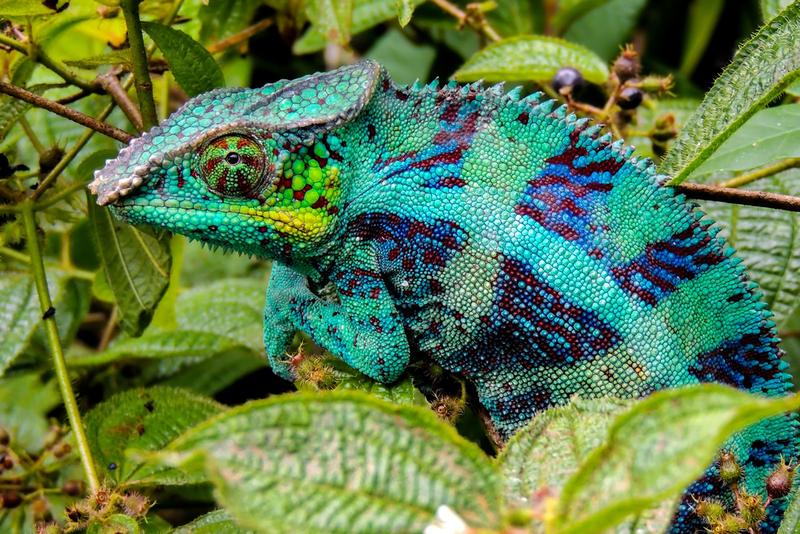
A chameleon has four layers of skin, three of which contain pigments that reflect particular hues and exhibit preset patterns. Color helps the lizards communicate with one another. Their changing colors let other chameleons know how they’re feeling, as well as how they’re reacting to environmental factors like temperature and light.
Lie: Coffee Will Completely Dehydrate You
That morning cup of Joe has so many perks: it wakes you up, keeps you focused and gives you an excuse to hang out in the breakroom for a few minutes. But we’re often told to be wary of its supposed dehydrating properties. Great news: your favorite beverage just got better.

Like any drink, a caffeinated beverage contributes to your daily intake of fluids. Caffeine is a mild diuretic, causing drinkers to potentially urinate more frequently and flush out those liquids we need. But the amount of loss doesn’t outweigh the intake, according to researchers at the University of Birmingham (United Kingdom).
Verdict? You don’t need to take a break from coffee.
Lie: Melatonin Is an All-Natural Sleeping Pill
Undisputed fact: sleep is great. It recharges us and aids our immune system. But many of us aren’t getting enough of it. Melatonin, a natural hormone, is often taken in dietary supplement form to promote restfulness.

Those with sleep disorders, such as insomnia, or people experiencing everything from jet lag to a new work schedule, turn to melatonin. It’s natural—what could go wrong? For starters, you can stop responding to melatonin if you get into the habit of taking it. That means you also won’t respond to the melatonin your body makes, leading to further sleep issues.
The biggest myth? Melatonin isn’t a sleeping pill. It helps regulate your sleep, but it’s not a sedative that initiates life-changing naps.
Lie: Daddy Longlegs Are a Type of Spider
The first thing we’d like to clear up is that daddy longlegs are arachnids, but they aren’t spiders. Yes, harvestmen, as they’re often known, have eight legs and enjoy hanging out in cellars, but these arachnids are more similar to scorpions.

Once you recognize that harvestmen aren’t spiders, many of the misconceptions fade away. First, daddy longlegs are Opiliones, known for having a fused head, thorax, and abdomen, whereas spiders (Araneae) have a distinct separation between thorax and abdomen. Another difference? Two eyes instead of eight. And you also won’t see a harvestman spinning webs.
Contrary to popular belief, they also aren’t venomous. Instead, daddy longlegs have defensive stink glands, enjoy playing dead, and will even shed their legs to escape predators.
Lie: Dogs Don’t Sweat — They Just Pant
We’ve all seen a dog breathing heavily, tongue out, after chasing down a tennis ball. When a dog pants, water evaporates from its tongue and nasal passages. This panting lowers a dog’s body temperature quickly, so it’s your canine companion’s way of cooling down. But that doesn’t mean dogs don’t sweat, too.

While the tough, hard texture of paw pads makes them the perfect natural soles, they also have some added bonuses. Believe it or not, a dog’s paw pads contain sweat glands. Instead of regulating temperature though, a dog’s strategically placed sweat glands make it easier for it to grip the ground.
Lie: You Should Tilt Your Head Back to Stop a Bloody Nose
Whether you’ve been practicing your telekinetic abilities while marathoning Stranger Things or you’re simply dealing with seasonal allergies, don’t tilt your head back to stop that pesky nosebleed. Instead, sit up straight and tip your head forward just a bit. That’s right: The solution is the opposite of what you were taught.

Tilting your head back will likely cause blood to run down your throat. And swallowed blood might upset your stomach. And an upset stomach could lead to vomiting. And particularly rough vomiting could trigger a nosebleed.
The good news is that most nosebleeds stop after 10 to 20 minutes of applying pressure. For best results, pinch the soft part of your nose and inhale carefully, mouth-breather.
Lie: Cracking Your Knuckles Is Bad for Your Joints
Many of us crack our knuckles every day. And, as kids, we were probably warned that stretching our fingers would lead to poor joint health and osteoarthritis. It’s clear now that knuckle cracking has been given a bad rap.

According to researchers, there is no direct link between contracting arthritis and cracking your knuckles. Although there have been a few reports of tendon injuries, the tell-tale cracking sound isn’t a sign of harm. Instead, the sound seems to be the result of increasing the space between joints, which causes the gas bubbles in your joint fluid to pop.
Lie: A Camel’s Humps Store Water
Yes, a company that specializes in everything from water bottles to water-toting backpacks has been named after camels, but that doesn’t mean this animal’s iconic humps actually store water. Those prominent protrusions are actually lumps of fat, not water reservoirs.

These fat mounds act as a sort of energy supply so the animals can travel for roughly three weeks without refueling. While they aren’t packing on water weight in their humps, camels can store roughly 80 pounds of fat on their bodies.
In the face of water scarcity, camels avoid dehydration thanks to their unique, oval-shaped red blood cells and efficient kidneys and intestines.
Lie: Toads Can Give You Warts
Even though toads have bumpy skin, those pocks aren’t contagious. Better yet? Despite what all of your witchy instincts are telling you, those bumps aren’t warts at all. If you caught toads with your bare hands as a kid, you can rest assured that your skin won’t face any lingering consequences.

Those bumps on toads’ backs are actually glands used to produce toxins that protect them from predators. Though a toad’s toxicity varies, none of them secrete HPV, or the human papillomavirus, which causes warts.
Lie: You’re More Likely to Catch a Cold in the Winter
Winter is often billed as “flu season,” or the optimal time to stock up on cough drops and tissues. But catching a cold isn’t directly related to being cold. Whether you’re inside or outside, frosty temperatures don’t cause a common cold or flu.

While cold weather can induce conditions such as frostbite or hypothermia, it’s not great for cultivating a virus. The reason sickness seems more prevalent in winter is because being cooped up inside warm or humid conditions with other people facilitates easy circulation for viruses.
And, despite what TV and movie tropes suggest, wet hair, or being wet and cold, don’t increase your chances of coming down with a sneeze either.
Lie: Drinking Alcohol Warms Your Body
Part of the allure of a hot toddy on a winter afternoon is the promise of the libation warming you up. Even drinks that aren’t warm by nature, like a stiff glass of whiskey on the rocks, are said to fortify us against the cold. Or, as it turns out, they help us think we’re bracing the cold okay.

In reality, alcohol lowers your core body temperature. By causing your blood vessels to dilate, more blood is brought to the surface, which makes your skin feel warm. When you’re cold, your body actually constricts your blood vessels to stay warm. That’s right—the exact opposite.
Lie: Earth’s Proximity to the Sun is the Reason for Seasons
Distance might make the heart grow fonder, but it doesn’t cause Earth’s seasons. We’re taught that the closer a planet is to the sun, the warmer its climate. The logic seems like it should apply to Earth’s seasons too. But, in reality, it’s all about the blue planet’s tilt.

The Earth rotates on an axis—picture a pole running through its center, not unlike a globe. Except that axis isn’t a straight pole. According to researchers at NASA, it’s believed that something knocked into Earth, making it off-kilter. This tilt means that different parts of our planet receive the sun’s direct rays at different times of the year.
And it explains why you should bring your swimsuit to the Southern Hemisphere during December.
Lie: Statues Made in Ancient Greece Were Always Colorless
Contrary to what your textbook says, artists from ancient Greece and Rome didn’t just make white marble sculptures. Many artists practiced polychromy, or painting objects with a variety of colors. But when you’ve seen sculptures in museums and dig sites they’re anything but colorful, so what gives?

While many of these sculptures were adorned with dazzling hues back in the day, their prolonged exposure to the elements wore away the colorful pigments and materials. And then Renaissance artists, who were inspired by antiquity, created their own monochrome sculptures in the 15th and 16th centuries. Sculptures, like Michelangelo’s David, further perpetuate this image of classical art as plain, unornamented, and colorless.
Lie: Snakes Unhinge Their Jaws to Swallow Prey
Snakes are known for biting off more than they can chew—or, in their caset, swallowing prey whole. For starters, the Burmese python can swallow a cat-sized appetizer or an antelope entrée. However, in order to take on these super-sized meals, snakes don’t dislocate their jaws.
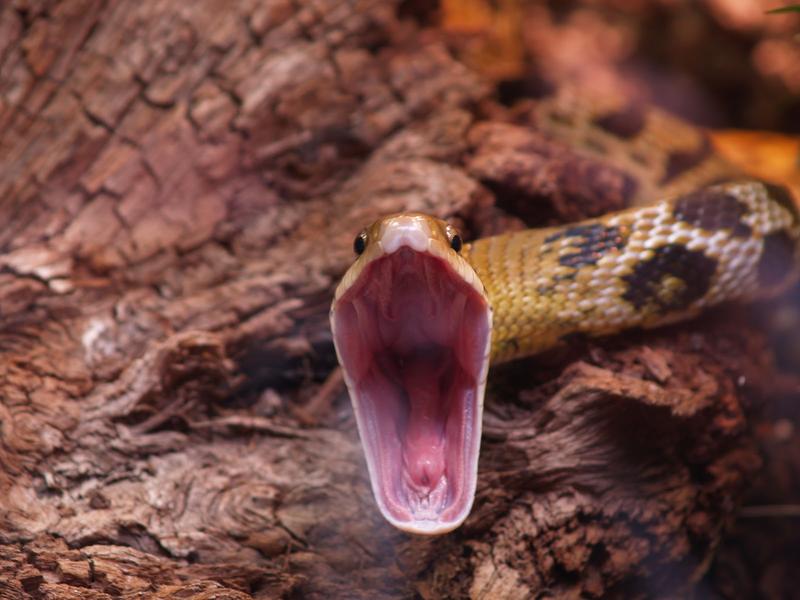
Instead, snakes’ jaws are just really flexible: the bones are loosely connected, and the surrounding skin has an elastic quality. Unlike our jaws, the lower mandibles aren’t fused together but connected by a stretchy ligament. Without a chin, a snake can really stretch its jaw, allowing many to eat prey 75% to 100% their size.
As you can imagine, the length of the digestion process is the most unhinged part of the snake’s feeding process.
Lie: Bulls Grow Angry at the Sight of Anything Red
When you think of a bull, you most likely picture bullfighting, where an angry, hulking beast charges towards a matador’s iconic red cape. And the bull does this because it loathes the color red, right? Well, no. In fact, bulls don’t really see the color red, metaphor or otherwise.

As dichromats, bulls see colors as a colorblind person does, which is to say that red doesn’t trigger anything special. Instead, bulls react to the matador’s movements. The jerky motions, the flapping cape—the bulls charges because it wants to stop the muleta. Sort of like a cat pawing at a laser pointer’s dot. Just with more hooves and horns.
Lie: Twinkies Have an Incredible Shelf Life
When the nuclear apocalypse hits, we all know only two things have a 100 percent chance of survival: cockroaches and Twinkies. Or so we’ve been told. Despite being full of the preservative known as sorbic acid, Twinkies don’t have an infinite shelf life.

Thanks to the product’s alleged longevity, Hostess’s popular cream-filled sponge cake has made appearances in a post-apocalyptic films, like Zombieland (2009). But the original Twinkie’s shelf life was just 26 days. (The 2013 version extends that to a moderately better 45 days.)
Meanwhile, a school in Maine has held onto a Twinkie for over 40 years. Even though it shows no signs of disintegrating, it’s gray, hard, and very inedible.
Lie: We Only Use 10% of Our Brains
Remember that Scarlett Johansson movie, Lucy (2014), in which she unlocked her brain’s “full potential” and acquired superhuman abilities? If you answered, “only vaguely,” that’s normal—and it’s not because you’re only using 10% of your brain. This enduring myth has no definitive origin point, though most experts link it to American psychologist and author William James.
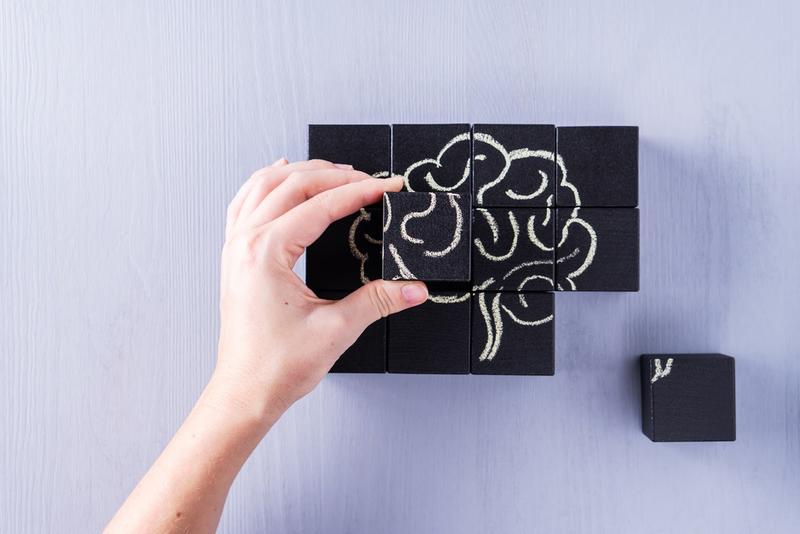
According to Johns Hopkins neurologist Barry Gordon, even though the brain makes up only 3% of a person’s weight, it uses 20% of a person’s energy. Not only is the brain hard-working, but different parts of it control different responses and functions.
Clearly, the myth is easily dismantled, but humans still love possibility. The 10% myth helps us feel as though we’ve got so much potential. If only we can unlock an extra bit of gray matter.
Lie: Deoxygenated Blood in Our Veins is Blue
We can hear our eight-year-old selves with freshly-scabbed knees asking, “If blood is red, why are veins blue?” The truth is, it has nothing to do with deoxygenated blood.

Hemoglobin, the red protein that transports oxygen, is certainly a brighter red when it’s pumped through the heart. As it travels to the arteries and capillaries, it loses a little brightness, but it’s always red.
Your veins only appear blue because the light hitting your skin reflects a blue wavelength.
Why does this misconception persist? To make diagrams of the circulatory system more obvious, oxygenated blood typically appears red and deoxygenated blood appears blue. Another example of art not imitating life.
Lie: You Should Urinate on a Jellyfish Sting to Stop the Pain
Though urinating on a jellyfish sting proved to be the (less-than-) perfect remedy for Monica of Friends fame, it probably shouldn’t be your treatment of choice.
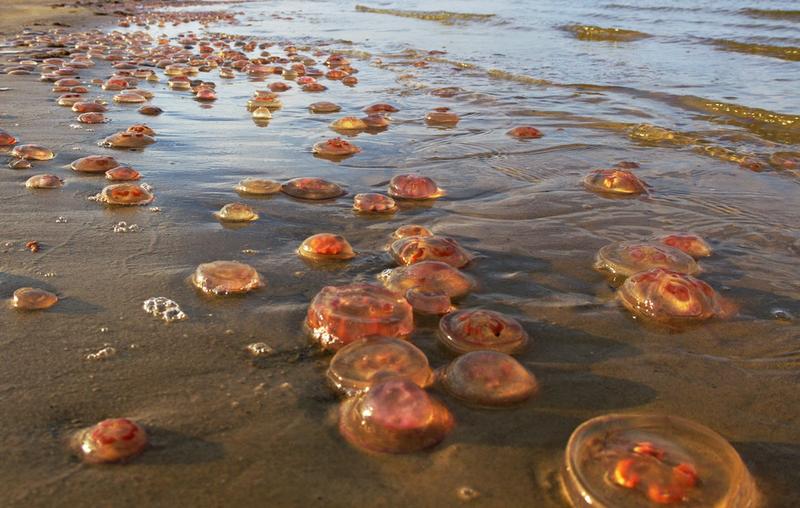
A jellyfish is composed of various cells, some of which contain venom. Once you’re stung, the injury will blister, itch, and throb, but touching it will only release more venom. That’s probably why victims turn to liquids—why not wash off the venomous cells?
This thought is correct, but experts suggest using saltwater, not urine. Though urine can contain salt, if it’s too diluted it will cause the remaining stingers to activate again. Those in pain should stay away from freshwater washes for this same reason.
Lie: Black Holes Are Gaping Holes That Suck Things In
Black holes are certainly mysterious. The stuff of science fiction novels and time travel movies, there are things researchers still don’t know for certain about their properties. But a few commonly held beliefs can be dispelled.

First, black holes aren’t the negative spaces or black spheres artists’ renderings make them out to be. They are objects so massive and compact that even light gets stuck in a black hole’s gravity. And that gravity? Well, it won’t just suck things in like a Dyson vacuum. If you get close enough, gravity will pull you in—same as a planet or star. But black holes don’t have infinite amounts of mass, so they won’t be consuming the universe.
Lie: Global Warming and Ozone Layer Depletion Are One and the Same
Even though these processes are often conflated, they impact different layers of the atmosphere. The ozone layer is part of the stratosphere, whereas the greenhouse gases linked to global warming build up in the troposphere.

The depletion of the ozone layer is caused primarily by chemicals known as chlorofluorocarbons (CFCs). Byproducts of aerosol sprays and refrigeration materials, CFCs escape into the atmosphere, where ultraviolet light breaks the chlorine atoms free. This free chlorine atom participates in a series of chemical reactions that cause ozone thinning. And then the chlorine just repeats those reactions, again and again.
Global warming, the observed increase in average air and ocean temperatures over the last century, is caused by the buildup of greenhouse gases. These gases are emitted more frequently thanks to human-made industrial processes. For example, carbon dioxide levels are at a higher concentration thanks to the burning of fossil fuels.
Lie: Swallowed Chewing Gum Stays in Your Body for 7 Years
As the name implies, chewing gum is meant to be chomped—not swallowed. But the idea of swallowed gum staying in your body for seven years holds as much validity as a swallowed watermelon seed sprouting a farm in your gut.

Though synthetic elements of the sweet substance aren’t digestible, your stomach will rid itself of swallowed gum via the small intestine. So, yes, that gum you like is going to come back in style, or, you know, come back to you. But it won’t take seven years. Just a week or so.
Lie: Vitamin C Will Keep Colds Away
Yes, vitamin C is undoubtedly good for you. Keep drinking that orange juice! But consuming mass amounts of the substance won’t stave off colds. In the 1960s, Nobel Prize-winning chemist Linus Pauling popularized the idea of ingesting “megadoses” of vitamin C as a way to prevent sickness.

Since then, it’s been proven that these mega doses do nothing to curb a cold or lessen its severity. Clearly, the general public bought into the “more of a good thing makes it even more effective” mentality. And, judging by the amount of Emergen-C sold every cold season, that mindset is sticking around.
Lie: Lightning Doesn’t Strike the Same Place Twice
The old saying goes, “Lightning never strikes the same place twice,” but lightning just isn’t that picky. And why would it be? Lightning is an electrical discharge caused by imbalances between storm clouds, or between the clouds and the ground, equalizing themselves. It has no interest in picking out a new piece of land to strike.

Aside from the fact that lightning doesn’t choose where to strike, it’s also clear that certain structures, such as skyscrapers, conduct electricity. One of these prime targets is the Empire State Building in New York City, which is struck 23 times a year on average.
Lie: All Bats Are Blind
While their eyesight varies from species to species, bats certainly aren’t blind. According to National Geographic, bats aren’t only able to see, but large bats can actually see extremely well—three-times-better-than-humans well, in some cases.
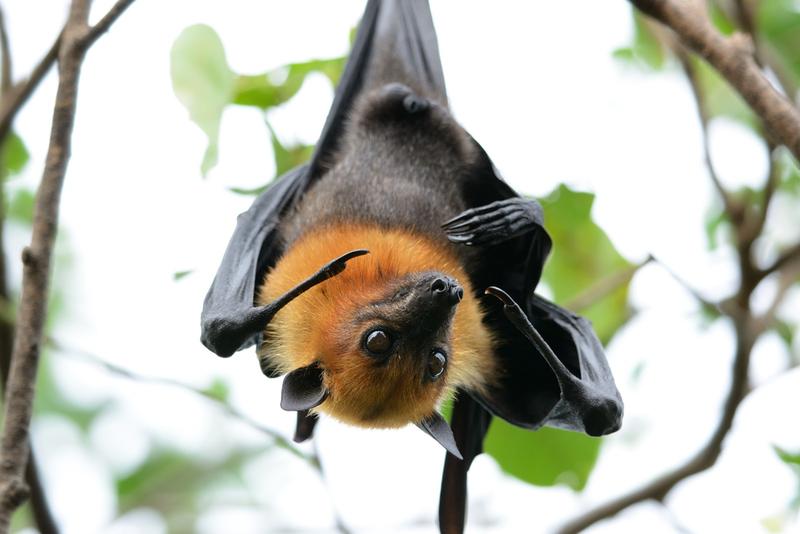
In school, you probably learned about bats’ use of echolocation, or how they navigate the dark using sound-centric GPS. Nighttime plus a reliance on sound? Sure, we can see how this misconception started. Nonetheless, some species, such as fruit bats, don’t use echolocation at all when grabbing grub. So, before you make a spectacle of yourself, it’s best to correct this batty perception.
Lie: Water Boils Faster with a Little Salt
Salt is certainly a handy ingredient. Without a doubt, it improves the taste of most dishes. But this miracle add-in doesn’t have the mutant ability to boil your pasta water more quickly. In fact, it’s kind of the opposite. What you were taught in “home ec” can be clarified with a basic chemistry lesson.

When salt is added to water, the boiling point of the mixture actually increases. This means it will take longer for the now-salted water to boil. The good news? Due to the increased boiling point, whatever noodles you throw into the water will cook faster because they’re being boiled at a higher temperature. In conclusion, salt to taste.
Lie: After Eating, You Should Wait 30 Minutes Before Swimming
The whole “Waiting 30 minutes to an hour to digest before swimming” thing? Baloney.

The unnecessary warning came from the notion that blood would be diverted to your gut during digestion, causing your arms and legs to fatigue more quickly.
Even a 1908 Boy Scout handbook, Scouting for Boys, warns that swimming (or bathing) too soon after eating could result in a cramp. The handbook notes, “You may drown—and it will be your own fault.” (Harsh.) Sure, you might get a cramp, but there’s no scientific basis for a life-threatening pattern, nor is there a magic amount of time you should wait before diving back in.
Lie: Specific Parts of the Tongue Are Tied to Particular Tastes
In grade school, your first formal taste test probably involved salty, sweet, bitter and sour liquids with a colorful “tongue map.” The goal: Determine which parts of the tongue distinguish each of the four tastes. If you were frustrated by this bogus test back then, prepare to feel vindicated…

In 1901, German scientist D.P. Hanig first measured the human tongue’s sensitivity, which resulted in the tongue map. Studies performed since have shown that Hanig’s findings were inaccurate.
First, the tongue map doesn’t account for umami, the fifth, savory-oriented taste. Second, all taste buds, regardless of location, contain receptors capable of perceiving all five basic tastes.
Lie: The Great Wall of China Is the Only Manmade Structure Visible from Space
Picture it: In the darkness of space, a blue-green sphere, speckled with clouds and punctuated by a grey-brown ridge, looming before you. Earth from space—made complete by the only human-made structure visible from space, the Great Wall of China. Well, it’s time to rethink whatever it is you picture in your mind’s eye.

In 2003, Chinese astronaut Yang Liwei said he could not see the Great Wall from space. What does that prove? It’s difficult to spot anything with the naked eye, especially if the weather conditions aren’t perfect. However, in low Earth orbit, astronauts can spot plenty of manmade structures at night, including cities and major roadways.
Lie: Carrots Improve Your Vision
Unlike other vegetables, which are lauded for their more general health benefits, carrots have been branded with a superpower—they’ll improve your eyesight. But eating carrots helps you evade the need for eyeglasses as much as eating spinach gives you Popeye’s super strength.
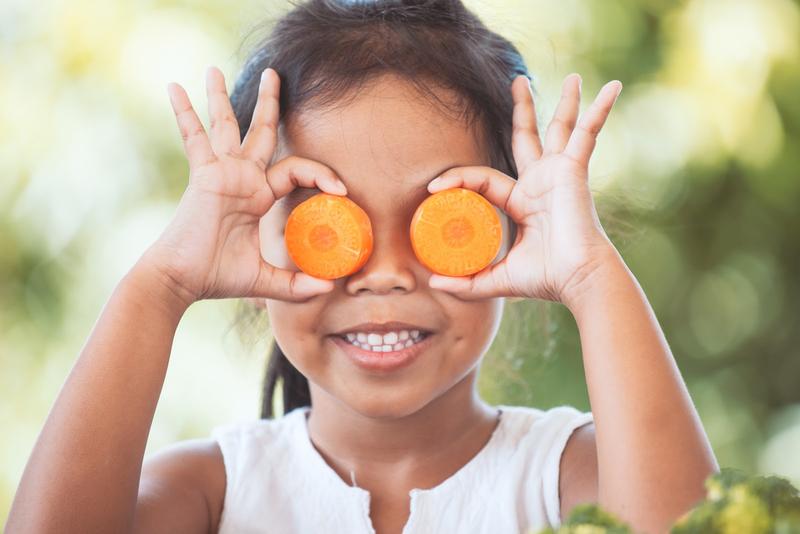
Carrots do contain the beneficial vitamin A. This helps your body synthesize rhodopsin, a substance that allows your eyes to operate in low-light conditions. While a vitamin A deficiency can lead to blindness, it still doesn’t improve your eyesight. It’s just helpful.
(That improvement myth probably gained legs thanks to some Word War II-era British propaganda.)
Lie: Redwood Trees Are the Largest Still-Living Land Organisms
California’s ancient redwood trees tower above the forest floor, with the largest on record coming in at 379 feet tall. However, these record-setting trees aren’t the largest still-living organisms on the planet. Belonging to the genus Armillaria, A. solidipes (or honey fungus) nabs the title.
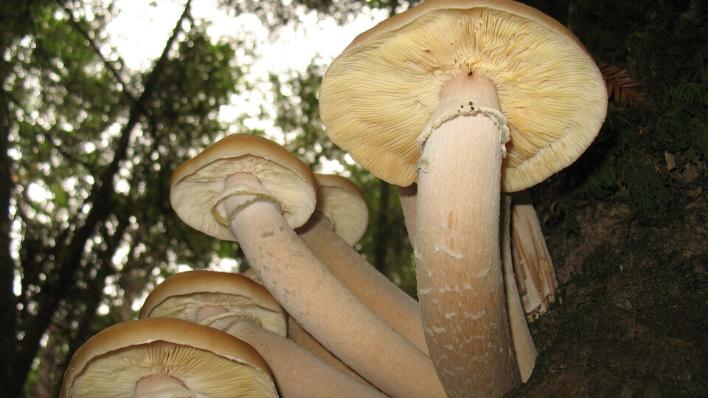
Found in Oregon’s Blue Mountains, the fungus is responsible for mass tree die-offs in Malheur National Forest and now covers a whopping 2.4 miles. While there has been some debate among experts about what constitutes a “single” organism, the specimens in question hit all the necessary criteria. That is, the mushrooms all have an identical genetic makeup and originate from the same organism.
Lie: All Elephants Are Terrified of Mice
We all have our fair share of “irrational” fears. After all, so many people are afraid of spiders, which — unless you’re living in Australia — are pretty small compared to the relative size of humans. Following that line of thought, it seems possible that 5-ton elephants might fear mice.

Unfortunately, humans may be alone when it comes to our fears of (much) tinier creatures. The comedic myth that elephants are afraid of mice seemingly originated from children’s stories, including Disney’s Dumbo (1941). However, it is true that elephants have poor vision, which means a lumbering pachyderm might be startled by a fast-moving bird or mouse.
Lie: Bananas Grow on Trees
Although banana plants can be the size of trees — growing up to 25 feet tall in some cases — the plants aren’t trees. And that means, contrary to popular belief, bananas don’t grow on trees. In fact, the banana plant is the world’s largest perennial herb.

Up close, a banana plant might even look like a tree. Thanks to its woody fibers, the plant’s leaves and stalks are strong. However, the herb doesn’t have the trunk or branches characteristic of trees. Fun fact: Bananas are technically a type of berry since, unlike what we’d consider fruits, they don’t produce mature seeds.
Lie: A Severed Earthworm Can Regenerate Into Two New Earthworms
Okay, so this one isn’t too far off base. According to Live Science, planarian flatworms can regenerate into two or more new worms when the original subject winds up spliced. But earthworms aren’t like planarian flatworms or the hydra from Greek mythology.

If you look closely, you’ll see that an earthworm does have a distinct head. If sliced in two, the section of the earthworm that contains its head can regenerate a new tail. But that tail-only end? No such luck. Even though earthworms don’t have the X-Men-like ability to duplicate themselves, their regenerative properties are still pretty impressive.
Lie: A Goldfish’s Memory Lasts 3 to 7 Seconds
Unlike Ellen DeGeneres’ Dory from Finding Nemo (2003), goldfish don’t deal with constant short-term memory loss. Although the popular orange fish aren’t octopus-level smart, they are capable of learning and retaining information.

In fact, experts believe that goldfish can learn basic survival skills and hold onto those smarts for around three months. Sure, that’s not an incredibly long period of time, but it is much more impressive than seven seconds. On the other hand, it seems that goldfish have pretty short attention spans, so anything outside of finding food or hiding spots might not stick with them.





